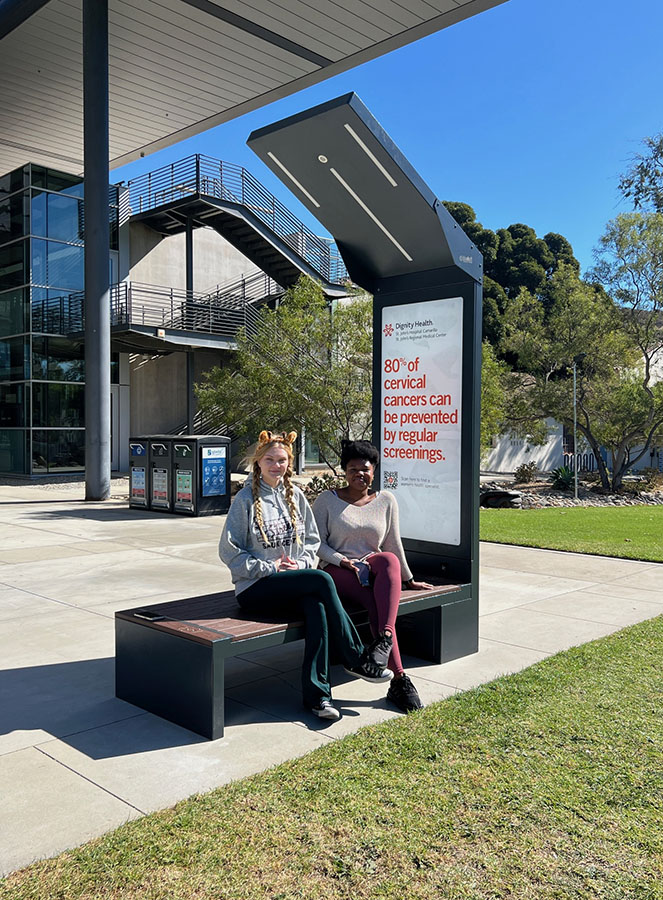 CAMARILLO — In 2019, CSU Channel Islands (CSUCI) joined the U.S. Department of Energy (DOE)’s Better Climate Challenge by pledging to reduce its carbon emissions by 50%. The University did not only meet the challenge but surpassed it by reducing emissions by 60% from 2019 to 2023.
CAMARILLO — In 2019, CSU Channel Islands (CSUCI) joined the U.S. Department of Energy (DOE)’s Better Climate Challenge by pledging to reduce its carbon emissions by 50%. The University did not only meet the challenge but surpassed it by reducing emissions by 60% from 2019 to 2023.
In October, the DOE published the “2023 Better Buildings Initiative Progress Report,” which summarizes the achievements of DOE’s Better Buildings public and private sector partners since the initiative’s inception in 2011. The DOE recently recognized CSUCI as one of the DOE partners with a profile on DOE’s Better Buildings Solution Center. To date, Better Buildings partners like CSUCI have saved nearly $22 billion in energy costs nationwide, resulting in more than 220 million metric tons of avoided greenhouse gas emissions.
“We are setting an example for other universities by making a positive impact on the environment,” said then-CSUCI Director of Sustainability and Energy Roxane Beigel-Coryell, who entered the University in the DOE’s Better Climate Challenge.

Solar farm at California State University, Channel Islands – green energy initiatives, November 15, 2024
CSUCI met and surpassed its goal with fuel switching, energy efficiency measures, and onsite renewable power across its 1,000,000-square-foot “portfolio,” which refers to the inventory of all the sources of energy on campus, such natural gas, electricity, diesel, automotive gas, etc.
Beigel-Coryell said the campus was committed to reducing both its “Scope 1” and “Scope 2” emissions by at least 50% by 2029. Scope 1 refers to direct emissions, or the fossil fuels the campus burns such as gas and diesel fuel for campus vehicles or transportation, heating and cooking. Scope 2 refers to purchased energy, or emissions associated with the generation of electricity consumed on campus.
“One of the biggest things we’ve done is transitioned from using steam as a primary heating and cooling source,” Beigel-Coryell said. “Now we use electricity for cooling and natural gas for heating in most areas.”
The field of solar panels next to the University played a big part in reducing Scope 2 emissions, she said, as solar energy has zero emissions. The solar farm is one example of the investment the University has made into energy efficiency and reducing carbon pollution over the last decade.
“We’ve done this a number of different ways, large and small,” Beigel-Coryell said. “We’ve optimized our building controls to make sure we are not wasting energy by cooling and heating spaces as effectively as we can. Ninety percent of our landscaping equipment is electric. We’ve installed newer, more efficient equipment and we have plans moving forward for more energy efficient projects, such as putting more LED lighting on campus.”
Recently, the University installed new solar benches that are free to the campus and will provide revenue from businesses that advertise on the bench.
“They are benches with a solar panel on top that charges a battery in the bench that enables campus members to charge their cell phones or plug in a USB port,” Beigel-Coryell said.
There are two benches in front of the library, one in the South Quad, one next to Madera Hall and one next to Del Norte Hall.
The Better Climate Challenge is one component of the Better Buildings Initiative, through which DOE partners with hundreds of public and private sector organizations to make commercial, public, industrial, and residential buildings more efficient, thereby saving energy and money while reducing emissions and strengthening the economy.
“Congratulations to our 2024 Better Climate Challenge Goal Achievers for reaching their ambitious portfolio-wide goals and sharing their successful solutions with the market,” said DOE Principal Deputy Assistant Secretary for Energy Efficiency and Renewable Energy Jeff Marootian. “These industry leaders are demonstrating that decarbonization is not only possible – it’s happening now and it’s good business. We invite organizations to take up the charge and join us to build the clean energy economy of the future.”
CALIFORNIA STATE UNIVERSITY CHANNEL ISLANDS
California State University Channel Islands?(CSUCI) is Ventura County’s only public university and opened in 2002 as the 23rd campus in the?CSU system. CSUCI is located between Camarillo and the Oxnard Plain, midway between Santa Barbara and Los Angeles.
The campus is nestled against the foothills of the Santa Monica Mountains and is a 10-minute drive from the Pacific Ocean. With more than 5,100 students, 27,500 alumni, and 1,000 employees, CSUCI is poised to grow in size and distinction, while maintaining one of the most student-focused learning environments in public higher education with more than 90 academic degrees, teaching credentials, certificates, and professional and community programs.
Connect with and learn more by visiting www.csuci.edu or CSUCI’s Social Media.
The University encourages persons with disabilities to participate in its programs, events and activities. If you anticipate needing any type of accommodation, or have questions about the physical access provided, please contact the respective area below as soon as possible, but no later than seven (7) business days prior to the event/activity:
CSUCI Students: accommodations@csuci.edu
CSUCI Employee and members of the public: angela.portillo@csuci.edu
